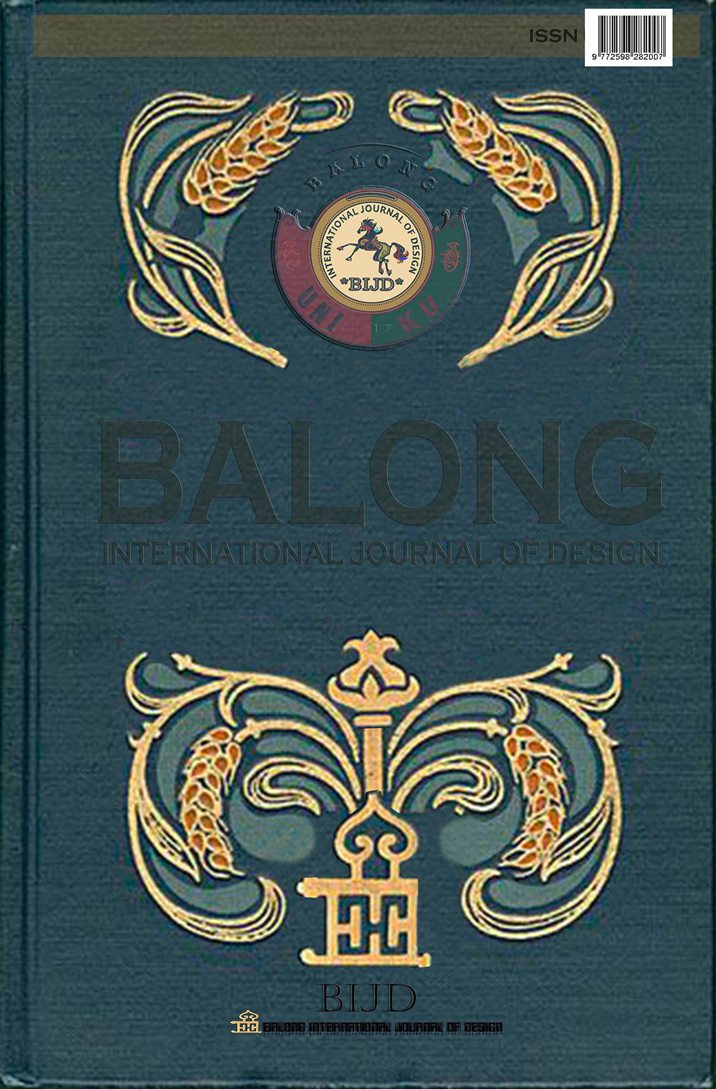THE PRADAKON
Abstract
The essence of the Stone Age, mountain, and river heritage, has occupied an important role in culture. So far, it can reflect much of the trust and value of its people. Historical, aesthetic, anthropological, and symbolic studies of archaeological discoveries in the region have been able to reveal prehistoric culture. The focus of this section, especially how culture is developed, symbols are built and the appreciation of transmission of inheritance. It is related to the software and hardware of the royal government that was formed to be able to balance the mandate of the management of the land of the archipelago. In the field of history, aesthetics, anthropology, and symbols, the dimensions of life cycle are presented as dialectical patterns of view. It is found that small, large, and representative entities are patterns of view that have been applied dynamically to everyday life. Through a comprehensive approach to the history of society and artevactual, apart from its constitutional history, the authors emphasizes the analysis of social formation by looking at the processes occurring within societies with broader disciplinary comparations. Through the applied method of psychological Sunan Bonang, the Indonesian people are inspired and can have a good system of anthropological and psychological intelligence. Research of this book uses theory and method which are relevant with object and subject matter. So the context that is built into legitimate, in text, oral and visual, both present (represented by Arif Rivai Rumin's work) and past (pradakon Majapahit, Ancient Mataram, Pajajaran, Kuningan, Jambi, and Padang) have been used as reconstruction. The content of the study and his work inspires the public's sensitivity in formulating nationality through the compilation of software and hardware in a more integral way. The ultimate goal is the point of awareness, which makes filters and counters a global power that seeks to make all the people of Indonesia. Keywords: pradakon, intellectual people of Indonesia
Keywords: pradakon, intellectual people of Indonesia
References
Adiatmono, Fendi. 2014. Weeskamer.
Yogyakarta: Deepublish.
Adiatmono, Fendi. 2016. Gorontalonology.
Yogyakarta: Deepublish.
Adiatmono, Fendi. 2016. Ornaments.
Yogyakarta: Deepublish.
Adiatmono, Fendi. 2016. Qualitative Writing
Method of Art. Yogyakarta: Deepublish.
Adiatmono, Fendi. 2017. "Sawerigading", Book
of Colophon, Issue 2. Vol. 2.Balai Bahasa
Sumatera Utara.
Adiatmono, Fendi. 2017. Kuninganologi,
Yogyakarta: Deepublish.
Adiatmono, Fendi. 2018. "The Trisula of
Kuningan", in Journal of International
Technology and Science Publications.
London: ITS.
Adiatmono, Fendi. November 4, 2017. "The
Weapons Kingdom of Brass". in
International Conference "Education and
Cultural Heritage" ICECH. Brussels
Belgium.
Altman, Irwin and Chemers. 1984. Culture and
Environtment. Monterey: Brooks / Cole
Pub. Co.
Bastein. 2016. Fastenofer, Blouring Jumwacht,
Material Für Gruppenstunden, Pilipinas:
Mabuhay.
Chris Gifford, James Bley, Dayo Ajayi, and Zach
Thompson. 2008. Searching and Game
Playing: An Artificial Intelligence
Approach to Mancala.
De Voogt. Alex. 2010. “Philippine Sungka and
Cultural Contact in Southeast Asia”. Asian
Ethnology Volume 69. New York:,
American Museum Natural History
Dunn, Emili. 2008. East Asian History. Australia:
Institute of Advanced Studies The
Australian National University.
Flores, Penelope V. 1998. Sungka: A Game Full
Of Holes. Filipinas: March.
James T. Siegel, "The Curse of the Photograph:
Atjeh, 1901" in Henk Sculte Nordholt,
Bambang Purwanto, and Ratna Saptari
(ed.), New Perspectives of Historical
Writing of Indonesia. Jakarta: TorchKITLV, 2008.
Koentjaraningrat. 1958. Anthropological
Methods in Indonesian. Society and
Cultural Investigation. Jakarta: Publishing
University Djakarta.
Larry Russ, 2000. The Complete Mancala Games
Book. New York: Marlowe & Company.
Livanos, Christopher. 2011. "A Case Study in
Byzantine Dragon-Slaying: Digenes and
the Serpent", in Oral Tradition Journal
-144. Taiwan: Shih Hsin University.
Loubere, Nicholas. 2010. "Is China Conforming
to a Westernized Global Culture? An
Assimilation Theory Analysis of Chinese
Western Cultural Relations ". Graduate
Journal of Asia Pacific Studies 7: 1. China:
Xiamen University.
Malinar, A. 2012. Purity and Impurity - Brill’s
Encyclopedia of Hinduism. Leiden: Bril.
Markus Mannberg. 2016. “Transgressiv
ritualpraktik inom hinduismen En studie
om śaivitisk vāmācāra-tantra i ljuset av den
ortodoxa hinduismens förståelse av
(o)renhet”. Lunds Universitet: Centrum
För Teologi Och Religionsvetenskap.
Maryaeni. 2012. Cultural Research Methods.
Jakarta: Earth Literacy.
Matthew Bardeen. 2008. “Coevolution of
Mancala Players”, COGS, Filiphina: University
of Sussex.
Pertti Alasuutari. 1993. Research Culture,
Qualitative Methods and Cultural Studies
(Sage Publications Inc.,.) Quoted by R.M.
Soedarsono, Research Methodology of
Performing Arts and Art (Bandung:
Indonesian Performing Arts Society, 1999.
Purwanto, Bambang. 28 September 2004.
"Academic Historian and Disorientation
Historiography: An Otokritik", Inaugural
Speech of Professorship at Faculty of
Cultural Sciences Gadjah Mada
University. Yogyakarta.
Robert Snapp. 2012. Mancala. Filiphina:
Department of Computer Science University of
Vermont.
Roojen, Pepin van. 2001. Batik Design.
Netherlands: Pepin Press.
Teparić, Meliha. 2013. "Representation in the
Arabic Calligraphy", Epiphany: Journal of
Transdiciplinary Studies Vol. 6, No. 2.
University of Sarajevo: Faculty of Arts and
Social Sciences.
Thomas Wilson, 1896. The Swastika.
Washington: Government Printing Office.
Usman S. 2006. Community Development and
Empowerment. Yogyakarta: Student
Literature

